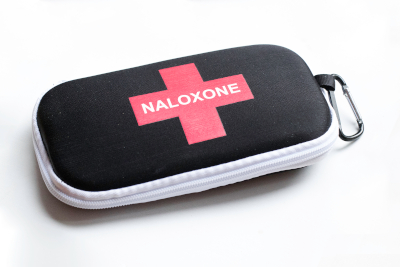Crack is cocaine in rock form. Cocaine is a naturally occurring substance that comes from coca plants. In the 1800’s it was used in medicines like throat drops. It could also be found in Coca Cola.
With time, people started to understand that cocaine was addictive and often harmful. By the early 1900’s, it could only be legally used with a doctor’s order. Currently, it’s a Schedule II controlled substance, meaning that it’s a drug with high abuse potential that still has some medical uses.
When people use cocaine recreationally, they may snort or smoke it. Cocaine that is snorted is usually a water soluble molecule that makes it snortable or injectable.
To make it into crack, it’s usually mixed with water and a substance like baking soda and then cooked down until is a non soluble rock. The rock is then smoked. Crack is thought to be the more addictive form of the drug.
Mechanism of Addiction
Crack cocaine works by making more dopamine available to your synapses. The reason more dopamine is available is because crack cocaine prevents your brain from cleaning up excess dopamine.
Dopamine has many functions in your brain. One of them is to help you understand that something is important. The excess dopamine produced by crack use makes users feel as though crack is something very important that they must have.
With repeated crack use, the person who uses will start to run out of dopamine. The feeling that is caused by the shortage of dopamine is so bad that people feel as though it must be avoided at all costs. This combination of reward and punishment is how crack cocaine leads to addiction.
Short Term Effects of Crack Cocaine Use

People often describe the rewarding feeling caused by crack use as a high or euphoria, at least at first. With continued use, that feeling may fade. Sometimes, the experience isn’t pleasant and instead leads the user to experience rage, paranoia and hallucinations. They might become loud and hyperactive.
Crack cocaine is a stimulant. Its immediate physical effects are to cause an increase in blood pressure. People may become very energetic, to the point where they don’t feel the natural limits of their body. This can lead to health emergencies, especially when the person who is using is also dehydrated. It can lead to lung damage, heart damage, kidney damage, muscle damage and general systemic problems.
Long Term Effects of Crack Cocaine Use
People who use crack cocaine over time have noticeable changes in their brain function. They get worse at making decisions and their ability to resist an urge lessens. The depleted dopamine stores lead to feelings of depression and anxiety. It can be difficult to find pleasure in normal, everyday events.
People whose crack use leads to a heart attack will have permanent heart damage because cardiac muscle tissue does not grow back if the tissue dies. There may be permanent muscle damage to other parts of the body as well. People who smoke crack often get permanent lung damage like emphysema and other breathing problems.
The legal problems that come with crack use may also have long term effects. Being caught with crack cocaine is a felony in many states, which may lead to jail time and affect a person’s ability to get employment.
Signs and Symptoms of Crack Cocaine Addiction
Severe depression and anxiety are very common among people who have been using crack for a long time. Cognitive problems may start to appear in people who use crack. They may have problems with attention as well as with their ability to bring up a memory.
As they lose the ability to resist urges, they may start to appear more reactive. To onlookers, this might look like mood swings or emotional regulation problems.
General behavioral signs of an addiction include secretiveness and financial problems. Physical signs of crack use might be unexplained burn marks, especially around their lips, nasal problems, breathing problems and marked weight loss.
Risk Factors for Crack Cocaine Addiction
Even though no specific genes for cocaine addiction have been discovered, cocaine addiction is very inheritable. It may even be the most inheritable mental illness there is.
Sharing a social environment with someone else who uses crack cocaine is also a major risk factor. The presence of co occurring mental illness may increase the risk for crack cocaine addiction, especially if one of those illnesses is ADHD.
Treatment Options For Crack Cocaine Addiction

Behavioral treatment is the first line treatment for cocaine use disorder. There are several different types of behavioral treatments that have been proven to be effective. The treatment with the strongest evidence is contingency management.
In contingency management, the program participants get rewarded for staying free from substance use. The reward may be in the form of vouchers, prizes and access to employment.
Other behavioral treatments include cognitive behavioral therapy, especially when it’s a component of the matrix model of treatment. In this model, participants receive individual, group, and family therapy for substance use. They also participate in social support groups.
The mainstay of physical recovery from crack cocaine is rest, recovery, fluids and nutrition. There are no FDA approved medications to help people detox from crack cocaine. There are some medications that may help prevent relapse. Getting treatment for co occurring disorders is also important for recovery.
People who are looking to access these treatments may be able to find them in outpatient or residential settings. A clinician can help people who are seeking care to determine what the best setting for that care might be.
The factors a clinician may consider when making a level of care recommendation include how safe and supportive that person’s living environment is and how dangerous their use has become.
Peer Support
Recovery is more than an absence of substance use, and this is where peer support can help. For many, recovery means having a meaningful life with a sense of connectedness to others.
Peer support can guide you through the process of re-establishing your life after crack cocaine use. Seeing other people who are living examples that recovery is possible can be very motivating. Peer support specialists are familiar with the pitfalls along the way to recovery and how to overcome them. They can help others do the same.
Many peer support groups meet in the community and online as well. Groups like Narcotics Anonymous and Cocaine Anonymous follow the twelve step model originally developed in Alcoholics Anonymous. People who prefer a recovery model that doesn’t rely on the concept of a higher power may find that groups like LifeRing and SMART Recovery are better suited to them. People with co occurring mental health challenges may find benefit from the peer support groups that NAMI offers.
Many healthcare institutions are integrating peer support into their services. You may find peer support workers in hospitals, emergency departments, outpatient substance use treatment clinics, and even some health insurance companies.
Relapse Prevention
Addiction is a long term chronic disease. Treatment doesn’t end with detox, it’s where it begins. Recovery is a way of life. You will need to actively choose to make decisions that support your recovery every day. That’s why it’s important to start establishing a supportive peer network right away.
Family is also an important part of recovery. Addiction is part of a family system. It’s important for family members to understand their role in the family system that has addiction within it and to get support. Support groups like Al-Anon and NAMI family support groups can be a good starting point.
Harm Reduction
Different people take different paths to recovery. Not everybody is ready to fully engage with recovery when they reach for help. It’s also common for people to relapse, which is why it’s important for people who use crack cocaine and other drugs to understand how to reduce the harm from using.

Harm reduction can help people live to see the day when they are ready to get help. Some harm reduction strategies include:
- Never using alone: Fentanyl is present in most illicit drugs, even when people believe it’s not in the drug they’re using. It has been found in cocaine freebase, which is what is used to make crack. A microscopic dose of fentanyl is enough to kill you. When you use with someone nearby, you increase the likelihood of being rescued if you overdose.
- Carrying naloxone: People who use crack cocaine should have naloxone available even if they don’t normally use opioids. Carry it with you and have it in your home as well. It can help protect you and your family members from an unintentional overdose.
- Managing paraphernalia: Use your own pipe. A pyrex pipe is better than other materials like copper or aluminum because it isn’t adding other chemicals to the smoke. Use a hash pipe screen to protect your lungs.
- Using condoms during sex: Condoms can protect against infections like HIV, hepatitis and parasites. Crack can increase the desire to have sex, so if you are using crack, have condoms with you. If you also use cocaine rectally, your mucosa will be damaged and more prone to infection than usual.
